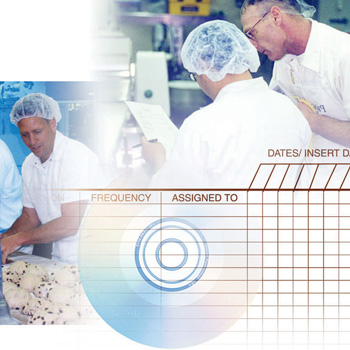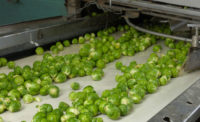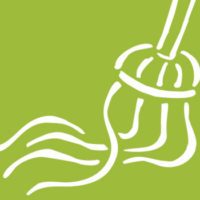Top Reasons Sanitarians Fear Sanitation Software–and Why Those Fears are Unfounded

“Implementing a master sanitation software system is too overwhelming.” “It will take too much time to get up and running.” “This is just one more thing sent down from corporate that’s going to make more work for us.”
As a technology company in a world of sanitarians, Robert Burgh, President of Suwanee, GA-based Nexcor Technologies, is used to hearing these complaints when he walks into a client facility. “There is a lot of apprehension about transitioning from a manual system to software,” he says. Sanitarians have been using three-ring binders to manage their sanitation schedules for decades, but they are becoming overwhelmed by the piles of data.
The time has come for the sanitation industry to make the move to software-based sanitation scheduling, insists Al St.Cyr, head of food safety education at the American Institutes of Baking (AIB), in Manhattan, KS. Manual systems were fine when facilities were smaller and regulations were less complex. However, tighter rules and the need to maintain more succinct documentation have made it nearly impossible to manage and distribute sanitation data using a paper-based system.
“We are in the era of the ‘mega-plant,’” St. Cyr says. “Facilities used to be a few hundred thousand square feet and operated a limited number of lines. Now, there are facilities in excess of a million square feet with multi-level production systems. Controlling sanitation data has become impossible. It is beyond the scope of the human mind.”
To help the industry make this transformation, AIB partnered with Nexcor to develop KLEANZ, a comprehensive full-featured food sanitation management software system for food plants, to replace the manual process. The KLEANZ software package generates more than 50 different reports, automates worksheets that assign sanitation tasks to specific employees, forecasts time requirements to predict staffing needs, documents actions and tracks job completion. The software also documents HACCP program requirements, corrective actions for CCPs, generates graphic reports, tracks third-party audits, corrective actions, cleaning supplies and inventory.
Facing Your Fear Brings Sanitation Success
Sanitarians know that the three-ring binders aren’t working, Burgh says, but they are still fearful about making the switch. Whether the client is a dairy plant or a cereal manufacturer, a large multi-site organization or smaller facility, Burgh encounters the same four concerns at the beginning of every rollout. And this is how he addresses them:
• “I’m going to spend half my day sitting at a computer.” A common misconception is that a software system adds administrative tasks to a supervisor’s day. In reality, the software system cuts several hours of administrative tasks for supervisors, which is time they can spend on the floor overseeing operations. The difference is that once a piece of data, such as a work order fulfillment, is documented in the system, it is automatically saved and updates all necessary records.
• “I’ll have to document every spill before I clean it up or I’ll be fired.” The food safety team doesn’t have to document every move they make. However, if they are walking the plant with an auditor and see a problem, such as a bag of spilled sugar, they do need to document it so they can prove how they solved it. With KLEANZ software, that’s as easy as typing in a corrective action work order, documenting how the problem was resolved, which takes just a minute. Six months later when the auditor returns and wants to see proof of your corrective actions, it is as simple as typing the date of the previous visit and hitting print.
• “It will take forever to transition all our data from the manual system to the software.” Any data that is computer-based, such as word processing documents or spreadsheets can be transferred in advance by the Nexcor team into the KLEANZ system. As a result, Nexcor completes most client rollouts in about four days.
• “We have several sites and need a uniform system.” Nexcor can go into a multi-site organization and copy the best practices of its highest functioning sites and translate those practices to the rest of the facilities. That way, not only is the master sanitation schedule uniform across the organization, it instantly upgrades every site to its best practices.
“Once sanitarians see how KLEANZ works, it makes many of their fears disappear,” Burgh says. “I hear ‘Wow, I never thought of that’ a lot, especially when they see how little time it takes to generate reports.” And that’s usually all it takes to eliminate those unfounded fears.”
www.nexcor.com
Looking for a reprint of this article?
From high-res PDFs to custom plaques, order your copy today!





